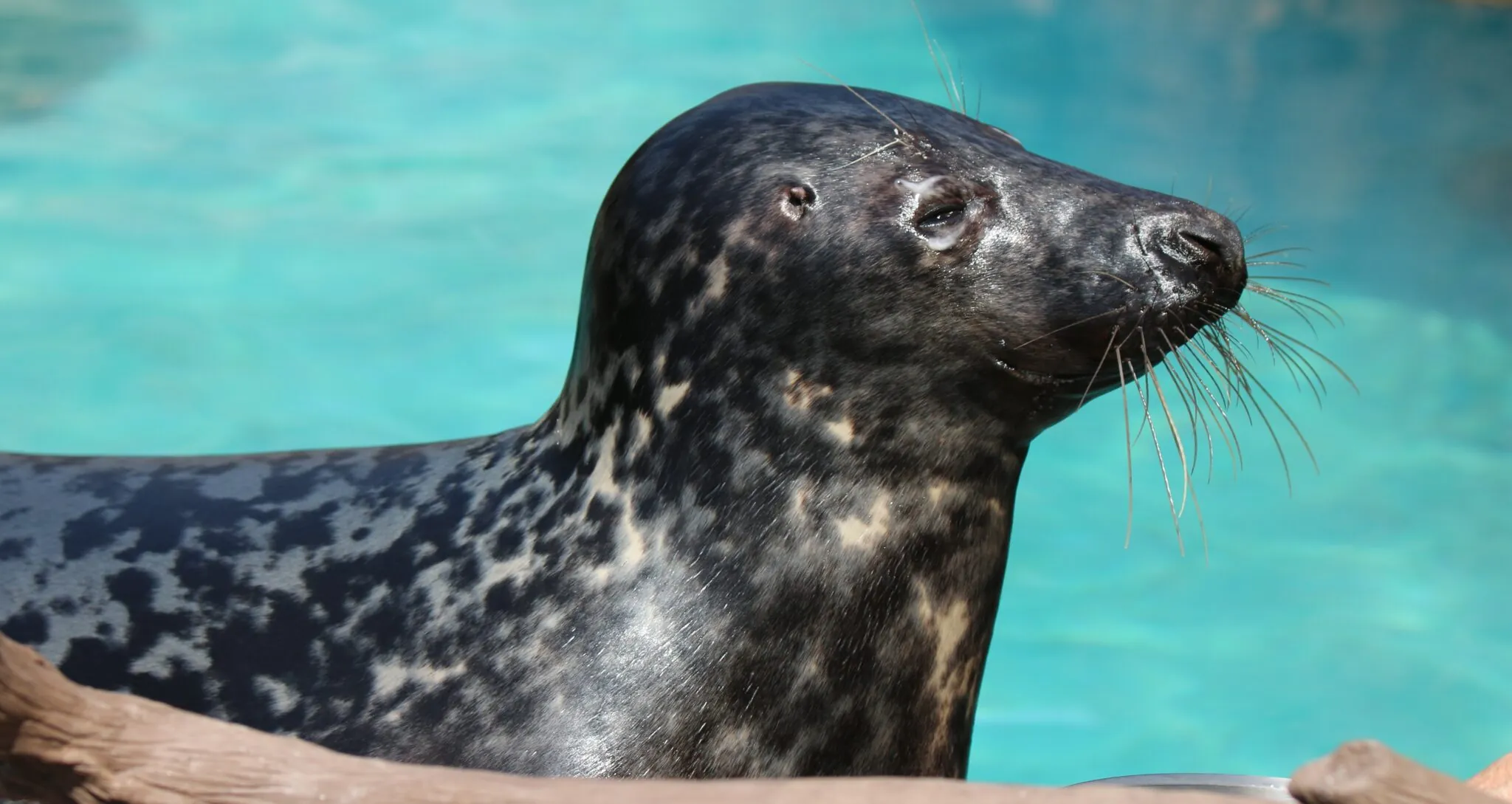-
Menu
- Plan Your Visit
- Meet The Animals
- Check Out Events
- Memberships
- About The Zoo
- Support the Zoo
- Conservation
- Education
- Groups & Private Events
- Zoo News
- Contact
- Indianapolis Prize
- Global Center for Species Survival
- Schedule
- Donate
- Membership
- Tickets

- Plan Your Visit
- Meet The Animals
- Check Out Events
- Memberships
- About The Zoo
- Support the Zoo
- Conservation
- Education
- Groups & Private Events
- Zoo News
- Contact
- Indianapolis Prize
- Global Center for Species Survival

Grey Seal
Halichoerus grypus
About
Grey seals are easily recognized for their long, curved nose—they are also known as horsehead seals. But, they use their senses of sight and hearing for hunting. They eat many kinds of fish and occasionally crustaceans or mollusks. It takes a lot of food to feed these great swimmers—they eat about 5% of their body weight every day! They can live at least 40 years, so seal populations need a lot of fish to thrive.
Grey seals get a fast start on life! Newborn pups are born after almost a year of gestation but then nurse for only about 3 weeks before living on their own. The mother skips meals during this time, and the infant gains 3 pounds a day. Pups are born with a coat of white fur, which they shed during a molting process after becoming independent. Adult seals have dark-colored backs and light-colored bellies, which helps camouflage them against the water and sky. Females have dark spots on a lighter body, while males have light spots on a darker body.

Conservation
Grey seals are doing well in their habitats, thanks in part to protections from the U.S. government. Individuals face threats from boats, fishing and pollution. You can help protect ocean wildlife by keeping our waterways clean of pollution and choosing sustainable seafood. The Seafood Watch program can teach you how!
WHERE ARE THEY AT THE ZOO?

